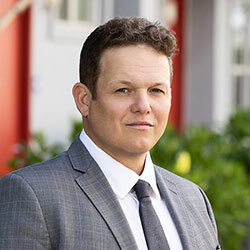In a wrongful death action, partner David Webster and associate Tudor Jones recently obtained summary judgment for our client, a large city in Northern California (the "City"). Plaintiff’s decedent lost control of his bicycle as he rode on a sidewalk through a narrowing underpass. Upon losing control, the decedent fell from the sidewalk into the adjacent roadway where he was struck and killed by a passing motorist. Plaintiff alleged that they City was negligent in its design and maintenance of a dangerous condition, the bicycle infrastructure, generally, on public property. The successful Motion for Summary Judgment was brought under Plaintiff’s failure to establish causation, a necessary element of the causes of action pleaded.
The trial court agreed with all arguments and entered Judgment against Plaintiff’s suit seeking an estimated $4 million in wrongful death damages. Notably, the Court sustained 27 of the City’s 37 objections to evidence.
Why this Case is Important: Fact Investigation
Wrongful death suits rarely involve admissible testimony by the decedent, so, by their nature, they are argued on the merits of eyewitness and expert testimony. Since the plaintiff in a wrongful death case may not have been at the scene of the death of the decedent, the facts as alleged commonly require detailed analysis and corroboration. Moreover, due to their nebulous nature, wrongful death actions may involve highly developed theories by plaintiff counsel who can do nothing more than speculate about the events leading up to the death. The flipside of the early development of a theory of the case, of course, is the closing argument at trial, when a plaintiff counsel can talk about the damages due to a plaintiff who lost a decedent and surely needs compensation. Once a sympathetic jury hears about the tragic end to a person’s life, defense counsel can do little to assuage the natural inclination of juries to grant high awards.
In our case, the plaintiff was a likeable widow of an upstanding member of the community. Plaintiff counsel specializes in bicycle-related personal injury actions. From the beginning, allegations were widespread, but uncertain: the sidewalk caused the bicyclist to lose control, or perhaps vegetation overhanging the sidewalk was the primary influence, or maybe the curb-cut in the sidewalk contributed. As we progressed through extensive discovery, every request for admission caused a battle, every response to an interrogatory, ambiguity. It became clear that none of the only three witnesses to the tragic incident, decedent’s riding companion, the passing motorist, or another motorist behind him, actually saw the events leading up to decedent losing control, so Plaintiff could not connect any alleged dangerous condition to the resulting death. The third witness, who spends half her time in Mexico and was difficult to pin down for deposition, offered vital testimony in her deposition, as the Court noted.
After extensive briefing and oral argument, the Court issued a 6-page Order granting the City’s Motion for Summary Judgment, holding that Plaintiff could not show what caused decedent’s death, nor that any alleged dangerous condition was a substantial factor, mainly because none of the three deposed witnesses could say with sufficient certainty that he or she actually witnessed the crucial last moments before the decedent lost control. The City had other strong defenses, including the open and obvious nature of the alleged conditions and the decedent’s familiarity with his chosen, fateful route, but the City’s Motion focused almost exclusively on lack of causation.
The Court rejected Plaintiff’s attempt to introduce the testimony of a design expert, an engineering expert, and an accident reconstruction expert, stating, "the Court cannot find that Plaintiff’s expert opinions are sufficient to demonstrate the existence of triable issues of material fact because of the absence of admissible evidence that the condition of the sidewalk and roadway are substantial factors."


